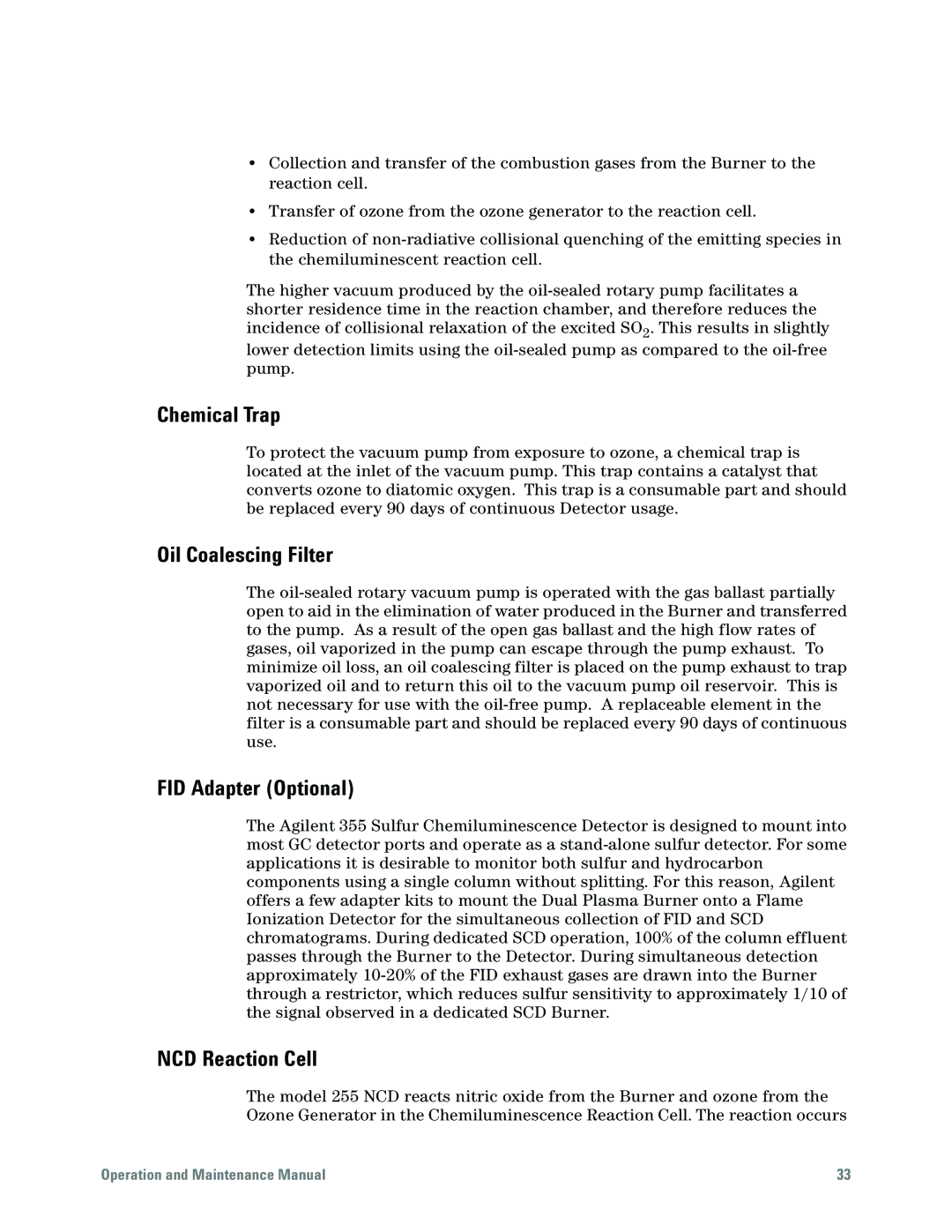•Collection and transfer of the combustion gases from the Burner to the reaction cell.
•Transfer of ozone from the ozone generator to the reaction cell.
•Reduction of non-radiative collisional quenching of the emitting species in the chemiluminescent reaction cell.
The higher vacuum produced by the oil-sealed rotary pump facilitates a shorter residence time in the reaction chamber, and therefore reduces the incidence of collisional relaxation of the excited SO2. This results in slightly lower detection limits using the oil-sealed pump as compared to the oil-free pump.
Chemical Trap
To protect the vacuum pump from exposure to ozone, a chemical trap is located at the inlet of the vacuum pump. This trap contains a catalyst that converts ozone to diatomic oxygen. This trap is a consumable part and should be replaced every 90 days of continuous Detector usage.
Oil Coalescing Filter
The oil-sealed rotary vacuum pump is operated with the gas ballast partially open to aid in the elimination of water produced in the Burner and transferred to the pump. As a result of the open gas ballast and the high flow rates of gases, oil vaporized in the pump can escape through the pump exhaust. To minimize oil loss, an oil coalescing filter is placed on the pump exhaust to trap vaporized oil and to return this oil to the vacuum pump oil reservoir. This is not necessary for use with the oil-free pump. A replaceable element in the filter is a consumable part and should be replaced every 90 days of continuous use.
FID Adapter (Optional)
The Agilent 355 Sulfur Chemiluminescence Detector is designed to mount into most GC detector ports and operate as a stand-alone sulfur detector. For some applications it is desirable to monitor both sulfur and hydrocarbon components using a single column without splitting. For this reason, Agilent offers a few adapter kits to mount the Dual Plasma Burner onto a Flame Ionization Detector for the simultaneous collection of FID and SCD chromatograms. During dedicated SCD operation, 100% of the column effluent passes through the Burner to the Detector. During simultaneous detection approximately 10-20% of the FID exhaust gases are drawn into the Burner through a restrictor, which reduces sulfur sensitivity to approximately 1/10 of the signal observed in a dedicated SCD Burner.
NCD Reaction Cell
The model 255 NCD reacts nitric oxide from the Burner and ozone from the Ozone Generator in the Chemiluminescence Reaction Cell. The reaction occurs
Operation and Maintenance Manual | 33 |
